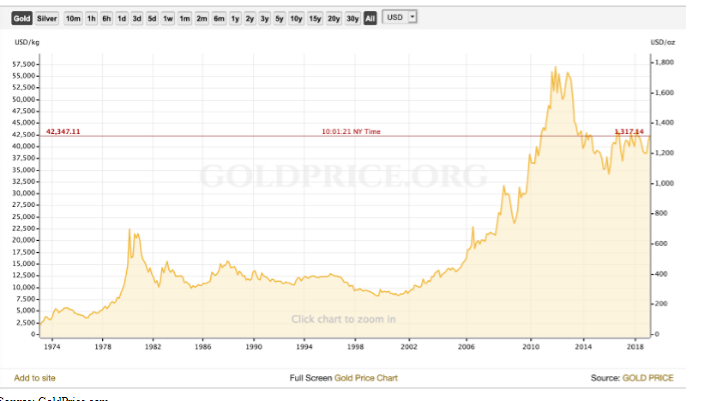
Source: Pexels.com Pixabay free for personal and commercial use
Money. It makes the world go around. We all want it. We all need it. It is a medium of exchange and a store of value, and provided inflation doesn’t completely degrade its buying power, it is perpetually in demand. I have been fascinated with the extraordinary lengths to which people will go (legally) to amass wealth over time. Investments are strategic in nature; the short-term performance of investments is often overlooked. Markets ebb and flow. Volatility is one of few guarantees investors can expect in the financial markets. Risk not, gain not.
Like so many others, my investment position was as follows: Sock a little bit of money away every month in top stocks and wait for the returns to come in. This is the proverbial slow boat to China approach. Kind of like the hare and the tortoise fable. The stock market is the preferred investment medium for folks who have adopted a long-term approach (strategic), day traders, swing traders, and short-term profit takers. You see, it all depends on a few factors:
- Your Appetite for Risk
- Your Investment Timeline
- Your Personal Disposable Income
- Your Choice of Broker or Trading Platform
- Your Knowledge of The Underlying Financial Assets
It has to be assumed that anyone who invests in stocks, commodities, indices, or currency pairs is at the very least willing to risk available resources for the prospect of future gain. There is absolutely no guarantee that your investment in gold the USD, S&P 500 index, CAC 40, DAX 30, FTSE 100, Microsoft, Caterpillar, Boeing, Tanzanite, Ethereum, Anglo American, Walmart, or any other financial option will yield dividends. It is assumed that top performers will continue generating favorable returns. That is a fallacy of belief. Every company will endure cycles. Boom or bust periods are part of the process and must be expected.

Source: GoldPrice.com
Historical records on the performance of gold bullion over the years paint a fascinating picture. Consider the price appreciation of gold since 1973 as a case in point. At that stage, gold was priced at $82.50 per ounce. Fast forward to the present day. Gold is now $1,317.14 per ounce. Clearly, the 40-year appreciation in gold is substantial enough to warrant a strategic investment. Even with inflation, gold has proven to be an impressive performer. What’s notable about gold for example is that it tends to perform well when the stock market is performing poorly and vice versa. This is because gold is a hedge against stock market volatility. This is an economic truth that investors and analysts have come to accept over time. The correlation is not absolute however, since multiple variables can interfere with price fluctuations.
Is This Getting a Little Overwhelming?
I was struck by the complexity and the intricacies of the economic world. How can anyone possibly make sense of investments if there are so many variables to consider? Even if you got 99 possible reasons to support a bullish outlook on a particular stock, but you missed 1 of the most important reasons to project a bearish outlook, your investment would go belly up. Savvy? An investment is only as good as the underlying fundamentals which point towards bullish or bearish behavior. It is entirely possible to buy while the market is rising, or on the way down. There is never a best time, since the market is not a static entity. It’s never white or black with investments, it’s always shades in between.
Fortunately, you don’t have to do rack your brains for the answers. You don’t have to reinvent the wheel. Traditional investment brokerages have been around for eons. They gladly take your money, invest it in funds of their choosing, take hefty commissions off the top, charge trade fees, monthly management fees, and annual fees, and don’t always offer you the best advice in the process. That’s not the direction you need to go. A quick search of trading brokerages reveals that you can either choose run-of-the-mill operations which are interested in lining their own pockets. Or you can choose to invest with a reputable trading platform which puts your investment success at the top of its agenda.
It’s a no-brainer. Once I found out about the services offered by Wealthsimple, I decided to dig a little deeper. What I uncovered quickly assuaged my concerns and filled me with confidence. In this WealthSimple review that I read, it was evident that they operates on the cutting edge. This is what puts it ahead of the competition in every way. The user interface, $0 account minimum, personalized portfolio, professional advice, and automatic portfolio rebalancing are features that everyone can appreciate. For me, the litmus test was the quality of the investment offerings. Among others, this brokerage facilitates investment, saving and trading. These are entirely different financial activities.
Your Investment Timeline Matters a Great Deal
As an investor, your strategic approach lends itself to a long-term timeline. It is a gradual process of wealth accumulation. Saving is different to investing. There is minimal risk with saving (except for hyperinflation) since you are putting your money away in a fixed-interest-bearing account. Trading is the act of buying and selling securities for gain. By incorporating multiple approaches to your overall investment plan, it is possible to reach your financial goals sooner. It is doubtful that anyone could really save up for retirement in the traditional sense. Investments would need to be made to allow capital to grow beyond an inflation-matching figure (that’s what saving is for).
Here’s the clincher for me: with this online brokerage, autopilot investing allows for maximum diversification across multiple assets. If your risk profile categorizes you as risk averse, you would naturally benefit from having the bulk of your funds in fixed-interest-bearing investments such as government bonds, short-term bonds, and high yield bonds. For the risk seekers among us, the preferred investment is stocks. The precise combination of stocks depends on your personal preferences. For example, a risk seeking investor would typically purchase a majority of US stocks, Canadian stocks, foreign stocks, and emerging market stocks. A minimal allocation would go towards short-term bonds and government bonds.
It’s not always an issue of simply having money to invest; it’s knowing what to do with the money you have to invest. That’s the challenge, and this online brokerage simplifies the process for you. Over time, I have found that many brokers throw you in the deep end with as many complicated graphs, charts, reports, and financial articles as they can muster. This is useful insofar as you understand what it means. If you’re a novice investor, you probably want somebody to walk you through your investment options, to better understand what is suited to your specific situation. Experience, integrity, and engagement are essential when working with an online investment broker. Anything less would be doing yourself a disservice.